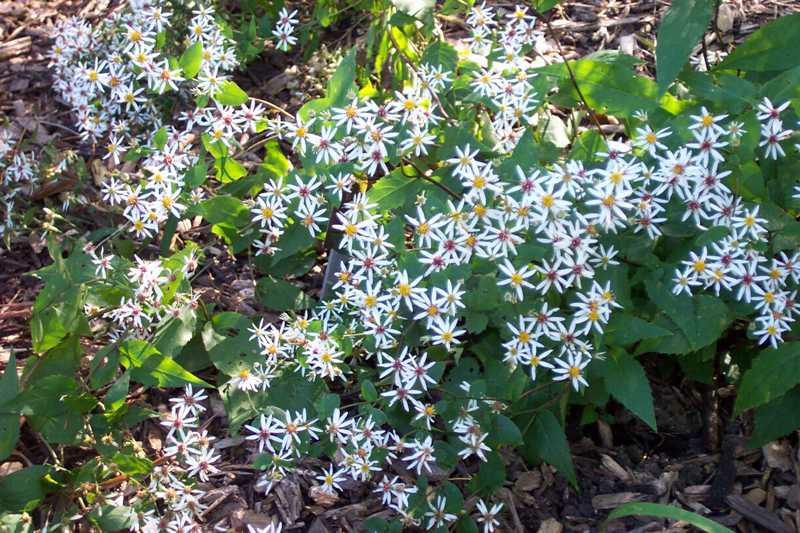White Wood Aster (Eurybia Divaricata ‘Eastern Star’)
White Wood Aster
Eurybia divaricata is native to Eastern U.S. and typically grows in the wild in dry open woods. It grows in loose clumps with dark, sprawling, sometimes zigzag stems up to 5′ tall. Distinctive leaves are heart-shaped, stalked and coarsely toothed. Small but abundant flowers (to 1 inch across) have white rays and yellow to red center disks and appear in flat-topped, terminal clusters in late summer to early fall. Attractive to butterflies.
Specific epithet means spreading.
‘Eastern Star’ is noted for its compact size, dark stems and floriferous bloom in shady conditions. It is a stout, leafy plant that produces shiny, dark mahagony stems to 12-18” tall. Leaves are heart-shaped, stalked and sharply-toothed. Small but abundant daisy-like asters (to 3/4” diameter) with white rays and yellow centers bloom.

Easily grown in average, dry to medium, well-drained soil in part shade to full shade. Thrives in shade and tolerates dry conditions. Good air circulation and some morning sun help reduce incidence of foliar diseases. Propagate by division in spring.
‘Eastern Star’ does not come true from seed, so consideration should be given to cutting back stems after flowering to prevent self-seeding.
| Hardiness zone | 3 - 8 |
| Sun light | Part Shade To Full Shade |
| Water | Dry To Medium |
| Maintenance | Low |
No serious insect or disease problems. Some susceptibility to powdery mildew. Aster wilt can also be an occasional problem, particularly if plants are grown in poorly-drained clay soils.
Open shade gardens, woodland areas, native plant gardens or cottage gardens.
| Common name | White Wood Aster |
| Botanical name | Eurybia Divaricata 'Eastern Star' |
| Plant type | Herbaceous Perennial |
| Family | Asteraceae |
| Hardiness zone | 3 - 8 |
| Water | Dry To Medium |
| Maintenance | Low |
| Flower color | White |
| Flowering period | August - September |
| Height | 1 - 1.50 Feet |
| Width | 1 - 1.50 Feet |